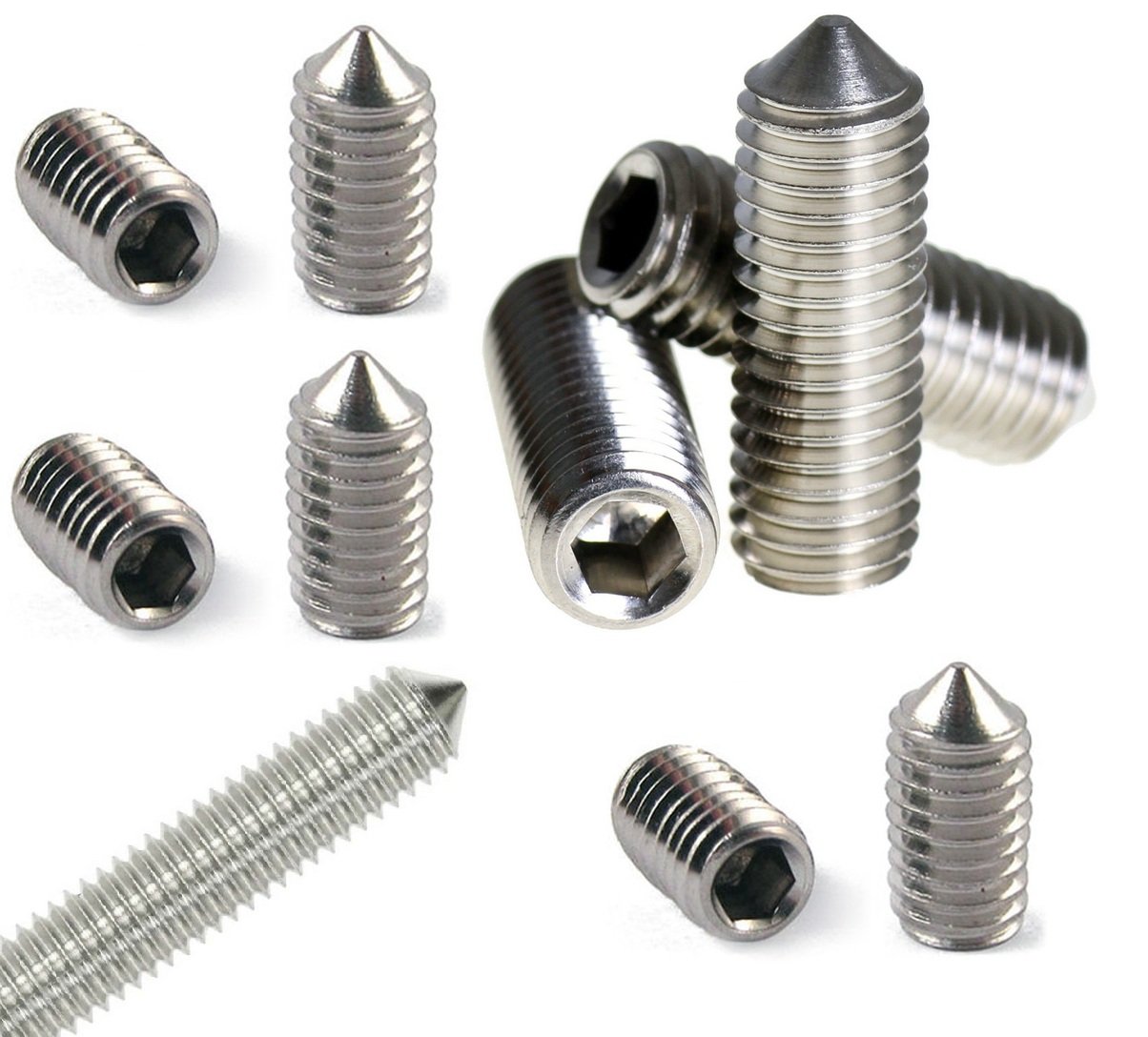Introduction
When it comes to fasteners, there are countless options available, each designed for specific applications. Among these, cone point set screw stand out as versatile and reliable components, finding utility in a wide array of industries and projects. In this article, we will delve into the world of cone point set screws, exploring their uses, advantages, and answering some frequently asked questions.
What is a Cone Point Set Screw?
A cone point set screw is a type of fastener specifically engineered to secure two objects together. These screws are unique because they feature a pointed, conical tip instead of the traditional flat or rounded heads. The conical tip, also known as the “cone point,” exerts immense pressure on the surface it’s pressed against, providing a reliable grip and preventing slippage. Cone point set screws are often used in applications where vibration or movement might cause conventional fasteners to loosen over time.
FAQ: Frequently Asked Questions
-
What are the Primary Uses of Cone Point Set Screws?
Cone point set screws find utility in various applications, such as:
- Positioning Components: They are commonly used to secure and align parts in machines and assemblies.
- Locking Mechanisms: In instruments or equipment, these screws prevent unintentional adjustments or movements.
- Fastening Against Flat Surfaces: They’re excellent for creating a non-slip connection between two surfaces.
-
Why Choose Cone Point Set Screws Over Other Fasteners?
The unique conical tip of these screws provides several advantages:
- Secure Grip: The pointed tip digs into the surface, providing superior grip and resistance to loosening.
- Minimal Surface Damage: They leave less surface damage compared to other fasteners, making them ideal for delicate materials.
- Vibration Resistance: The design ensures a strong, lasting connection, even in environments with high vibration.
-
How Do You Install Cone Point Set Screws?
Installing cone point set screws is relatively straightforward:
- Insert the screw into the hole.
- Apply downward pressure while turning the screwdriver to secure it.
- Ensure it is tight but without excessive force to avoid damaging the material.
-
Are There Different Types of Cone Point Set Screws?
Yes, cone point set screws come in various materials and sizes, each suited to specific applications. Common materials include stainless steel, alloy steel, and brass.
-
What Precautions Should I Take When Using Cone Point Set Screws?
- Be cautious not to overtighten, as this can damage the materials being joined.
- Consider the environment and select the appropriate material for corrosion resistance.
Conclusion:
Cone point set screws are an ingenious solution to many fastening challenges, offering a secure grip, minimal surface damage, and resistance to vibration. These versatile fasteners have found their place in numerous industries, from manufacturing to precision instruments. Understanding their uses and how to handle them can help you make the most of this innovative fastening solution. So, whether you’re a DIY enthusiast or a professional, cone point set screws are a valuable addition to your toolbox. A cone point set screw is a type of fastener specifically engineered to secure two objects together. These screws are unique because they feature a pointed, conical tip instead of the traditional flat or rounded heads. The conical tip, also known as the “cone point,” exerts immense pressure on the surface it’s pressed against, providing a reliable grip and preventing slippage.
Recommended Article: https://tefwins.com/


